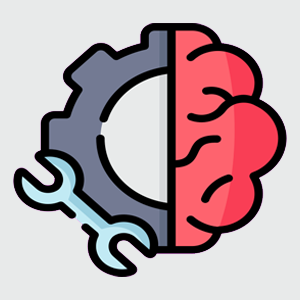 Artificial intelligence (AI) has proven to be a beneficial tool in a variety of businesses time and time again. It has infiltrated industries ranging from healthcare to agriculture, providing creative solutions that streamline operations, cut costs, and increase productivity. Project risk management is also an especially exciting field in which AI is transforming.
Artificial intelligence (AI) has proven to be a beneficial tool in a variety of businesses time and time again. It has infiltrated industries ranging from healthcare to agriculture, providing creative solutions that streamline operations, cut costs, and increase productivity. Project risk management is also an especially exciting field in which AI is transforming.
This article discusses how AI is revolutionizing project risk management and how you can apply the same principles in your company and achieve better results.
Understanding Project Risk Management: What is it and Why is it Important?
Project risk management is the process of identifying, analyzing, and responding to risk factors throughout the life of a project in the best interest of its objectives. The main goal is to minimize potential problems that could impact the project’s objectives, such as time frames, costs, and quality standards. Effectively managing project risk is critical because it influences the likelihood of achieving project success.
How AI is Revolutionizing Project Risk Management
In the past, risk management was a complex and labor-intensive process. It required project managers to predict possible pitfalls based on their experience and intuition, leaving room for human error and bias. However, the advent of AI technology has provided new and more efficient ways to manage these risks.
Here are some of the common ways of mitigating risks with technology with AI:
Improved Efficiency
AI systems quickly analyze vast amounts of data, detecting patterns and trends that might take humans hours, days, or even weeks to identify. The high-speed data processing and real-time risk monitoring features of AI allow project managers to make faster, more informed decisions.
The use of AI-powered tools like Usemotion can also significantly improve collaboration within the team. These tools provide a centralized platform for risk management, creating a unified view of project risks and allowing team members to work together more effectively.
Automated Scheduling
One way AI is transforming project risk management is through automated scheduling. AI algorithms analyze historical project data to forecast the most realistic project timelines, considering possible risks and uncertainties. This helps project managers develop more accurate schedules and identify potential bottlenecks before they happen.
Automated Risk Logs
AI also revolutionizes risk management by automating risk logs. By implementing natural language processing (NLP), AI can process and understand project documentation to identify potential risks. It then adds these risks to a risk log without any human intervention, freeing up time for project managers to focus on more strategic tasks.
AI-Generated Cost Estimations
AI can generate cost estimations with impressive accuracy. Using machine learning models, AI can predict the financial implications of potential risks based on a wide range of variables such as market trends, labor costs, and resource availability. This capability provides project managers with more reliable budgeting insights, helping them make better financial decisions.
How to Effectively Apply AI in Project Risk Management: Step-by-Step Guide
Applying AI in project risk management might seem daunting, but with a strategic approach, the transition can be smooth and beneficial. Here’s a quick step-by-step guide you can use:
1. Set Clear Objectives
Start by identifying what you want to achieve with AI in project risk management. Do you want to automate risk identification, improve cost estimation, enhance scheduling, or all the above? Having clear goals will guide your choice of AI tools and implementation strategy.
2. Choose the Right AI Tools
The market is flooded with various AI tools, each with its unique capabilities. Tools like Usemotion stand out due to their comprehensive features tailored for project risk management. Make sure to choose a tool that aligns with your project needs and organizational goals.
3. Prioritize Privileged Access Management
Ensuring secure and appropriate access to AI tools is critical. Implement robust access management protocols to prevent unauthorized access and potential misuse of AI tools.
4. Train Your Team
Invest in comprehensive training programs to equip your team with the skills needed to effectively use AI tools. The training should cover how the tools work, how to interpret their outputs, and how to troubleshoot basic issues.
5. Implement and Monitor
Once everything is set, implement the AI tools and monitor their performance closely. You may need to tweak settings and adjust your strategies based on initial results.
6. Review and Adjust
Regularly review the impact of AI on your project risk management. Are you achieving your set objectives? Is there room for improvement? Use these insights to adjust your strategies and maximize the benefits of AI.
Final Thoughts
Adopting AI in project risk management is not just an attractive choice but an important one. This is especially true in our rapidly evolving digital environment. AI provides organizations with the means to streamline the intricate world of project management through task automation, enhanced accuracy, and the technology-driven mitigation of risks.
With the right tools in hand, businesses can unlock the transformative potential of AI and reshape their approach to project risk management. While initial adoption may pose challenges and demand significant investment, the rewards AI promises make it an important tool for organizations.
